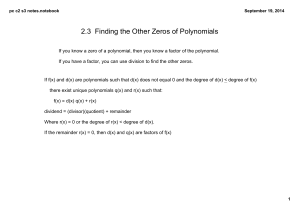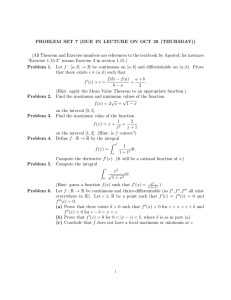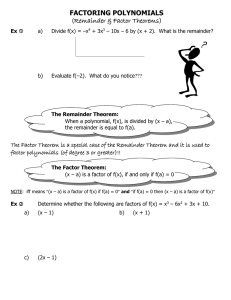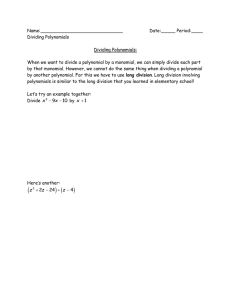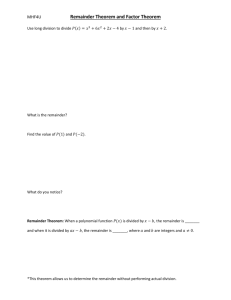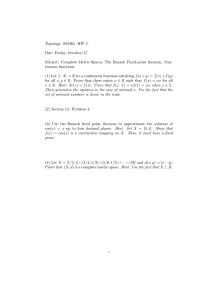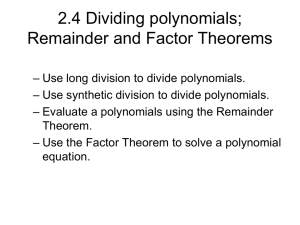Problem Set 0 + = a x
advertisement
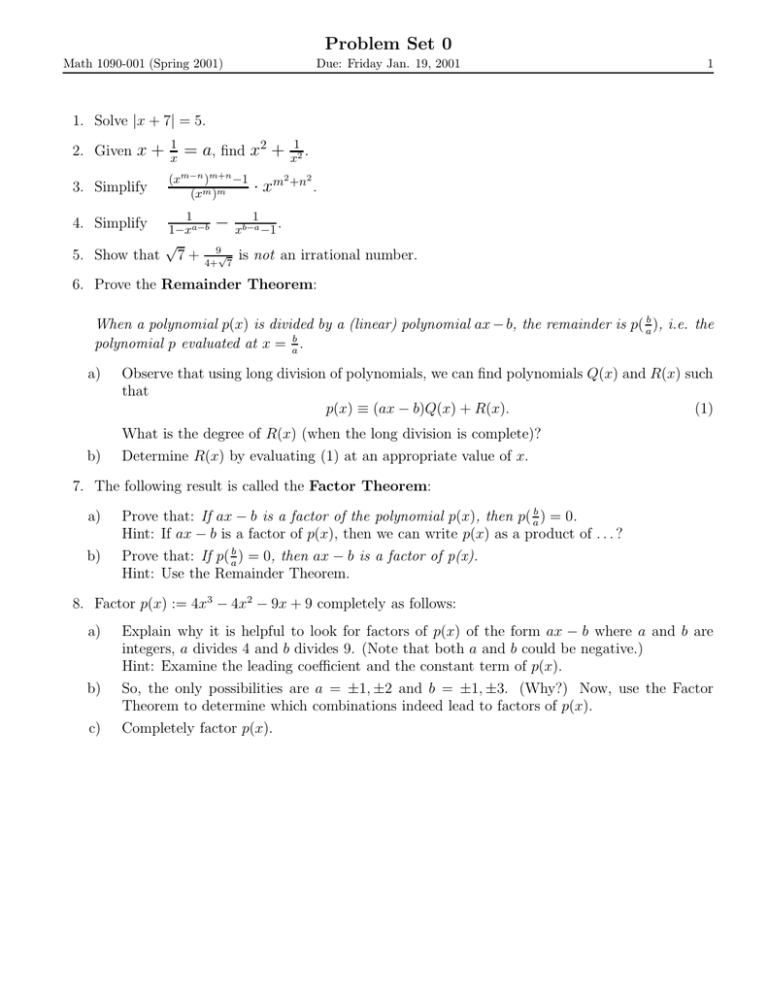
Problem Set 0 Math 1090-001 (Spring 2001) Due: Friday Jan. 19, 2001 1 1. Solve |x + 7| = 5. 2. Given x + x1 = a, find x2 + x12 . 3. Simplify (xm−n )m+n −1 (xm )m 4. Simplify 1 1−xa−b 5. Show that √ 7+ − 9√ 4+ 7 · xm 2 +n2 . 1 . xb−a −1 is not an irrational number. 6. Prove the Remainder Theorem: When a polynomial p(x) is divided by a (linear) polynomial ax − b, the remainder is p( ab ), i.e. the polynomial p evaluated at x = ab . a) b) Observe that using long division of polynomials, we can find polynomials Q(x) and R(x) such that p(x) ≡ (ax − b)Q(x) + R(x). (1) What is the degree of R(x) (when the long division is complete)? Determine R(x) by evaluating (1) at an appropriate value of x. 7. The following result is called the Factor Theorem: a) b) Prove that: If ax − b is a factor of the polynomial p(x), then p( ab ) = 0. Hint: If ax − b is a factor of p(x), then we can write p(x) as a product of . . . ? Prove that: If p( ab ) = 0, then ax − b is a factor of p(x). Hint: Use the Remainder Theorem. 8. Factor p(x) := 4x3 − 4x2 − 9x + 9 completely as follows: a) Explain why it is helpful to look for factors of p(x) of the form ax − b where a and b are integers, a divides 4 and b divides 9. (Note that both a and b could be negative.) Hint: Examine the leading coefficient and the constant term of p(x). b) So, the only possibilities are a = ±1, ±2 and b = ±1, ±3. (Why?) Now, use the Factor Theorem to determine which combinations indeed lead to factors of p(x). Completely factor p(x). c)

